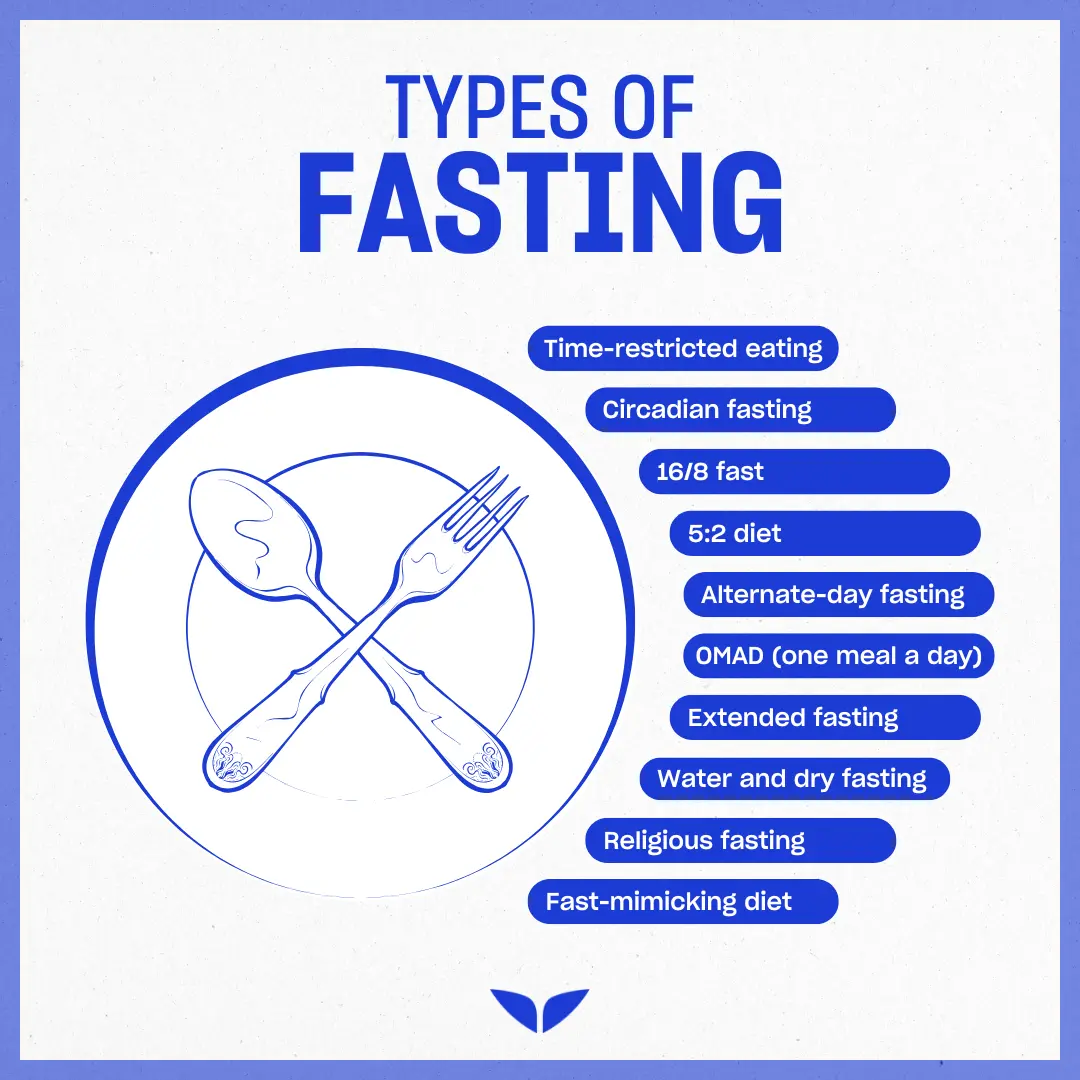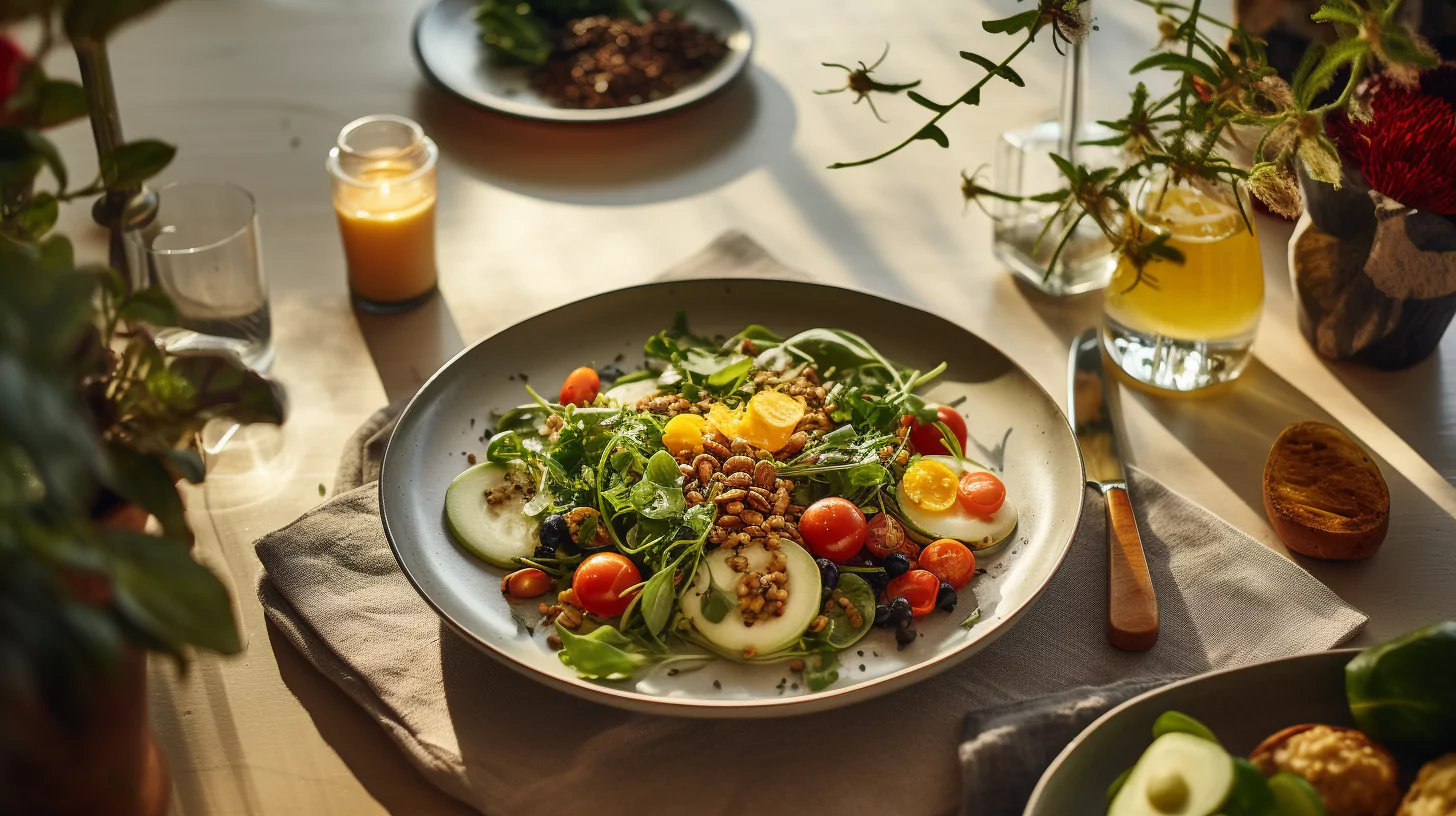We’ve been conditioned to believe the body must be constantly fed. But the real secret to energy, longevity, and metabolic health lies in when you eat, not just what you eat. The types of fasting practiced for centuries—once the province of monks and mystics—are now the favored pursuit of the health-conscious, the biohackers, the age-defiers.
It’s “one of the most powerful but also easiest tools to transform body and mind,” as Ronan Diego, a holistic health mentor, highlights in his Beyond Fasting program on Mindvalley.
Intermittent, extended, dry, water, and what have you—each fasting method unlocks something different. But with so many choices, how do you choose the right one?
This practice of culinary restraint is no passing fancy. It’s a tool. When used correctly, it optimizes metabolism, triggers cellular repair, and enhances focus. The key is knowing which method works for your body and goals.
What is fasting?
Fasting is the practice of voluntarily abstaining from food (and sometimes drink) for a set period of time.
“Its actually about body mastery,” says Ronan. “Its actually about how you integrate things that happen in your body and things that happen in your mind, so that you bring together the experiences that you want to have in life with [the] body that supports that.”
But this kind of abstinence isn’t new. It’s ancient, stitched into human history as a survival strategy, religious ritual, and political statement.
Socrates and Plato swore by it for mental clarity. Hippocrates, the father of medicine, prescribed it as a cure-all. Every major religion—from Islam’s Ramadan to Christianity’s Lent to Hindu and Buddhist fasting traditions—embraces the practice as a way to cleanse body and spirit.
[Fasting is] one of the most powerful but also easiest tools to transform body and mind.
— Ronan Diego, trainer of Mindvalley’s Beyond Fasting program
What was once a necessity, when food scarcity made fasting a fact of life, is now a choice. And with the rise of anti-diet culture, many are seeking alternatives that focus on metabolic health, longevity, and mindful eating.
Benefits of fasting
“The idea of fasting is doing, for a certain amount of time, that you empty the storage inside of your muscles and your liver and start pulling the energy from the fat cells,” Ronan explains. And science shows that when food intake stops, the body shifts gears with profound effects.
- It burns fat more efficiently. Lower blood sugar and insulin levels signal the body to burn stored fat for energy. This process is called ketosis.
- It cleans up damaged cells. Fasting triggers autophagy, a cellular recycling process that reduces inflammation and may slow aging.
- It sharpens the brain. Increased levels of BDNF (brain-derived neurotrophic factor) improve memory, focus, and brain function.
- It supports heart health. Studies show fasting can lower blood pressure, bad cholesterol (LDL), and inflammation, reducing the risk of heart disease.
- It sharpens mental function, helping to enhance cognitive performance, supports brain health, and fosters clarity and focus.
Yet, for all its perks, fasting isn’t a one-size-fits-all miracle. The body rebels at first—with hunger pangs, fatigue, and irritability. It’s biology fighting back, a survival instinct honed over millennia.
But as nephrologist Dr. Jason Fung writes in his book, The Complete Guide to Fasting, “Hunger is a state of mind, not a state of stomach.”
Pushing through the discomfort reveals something deeper—clarity, control, and the body’s ability to recalibrate. Fasting slows constant intake, giving the body space to repair, reset, and function at its best.
The main types of fasting
Not all fasts are created equal. Some last hours, others stretch for days. The right choice depends on your goals—fat loss, longevity, mental clarity.
So what are the different types of fasting? From time-restricted eating to multi-day resets, here’s a breakdown of the most effective fasting protocols and what they offer.

Time-restricted eating (TRE): Eating within a daily window
TRE happens every day and focuses on meal timing rather than skipping entire days of food.
- Early TRE: Eating early in the day (e.g., 7 a.m.–3 p.m.).
- Late TRE: Eating later in the day (e.g., 12 p.m.–8 p.m.).
- Circadian fasting: Aligning meals with the body’s natural clock, avoiding late-night eating.
Intermittent fasting (IF): Alternating eating & fasting periods
This method is more flexible and can include daily fasting (like TRE) or full fasting days (like 5:2). Here are a few types of intermittent fasting:
- 16/8: Fast for 16 hours, eat in an eight-hour window.
- 5:2: Eat normally for five days, restrict calories (~500-600) for two days.
- Alternate-day fasting (ADF): Fast every other day, with or without a small calorie intake.
Extended fasting: Going 24+ hours without food
Prolonged fasting goes beyond IF and involves full days without eating.
- 24-hour fast (OMAD): One meal a day, usually dinner to dinner.
- 48- or 72-hour fasts: Longer fasts for deeper autophagy and metabolic reset.
Water and dry fasting: No food for a set period
Water and dry fasting can be combined with IF or extended fasting.
- Water fasting: Only water for 24+ hours.
- Dry fasting: No food or liquids at all.
- Soft dry fast: No drinking, but washing is allowed.
- Hard dry fast: No contact with water, including washing hands or showering.
Religious fasting: Based on spiritual practices
Religious fasting follows specific rules and spiritual traditions.
- Ramadan (Islam): No food or drink from dawn to sunset.
- Lent (Christianity): Certain foods restricted, sometimes partial fasting.
- Yom Kippur (Judaism): A 25-hour complete fast with no food or water.
- Ekadashi (Hinduism): Avoiding grains on specific lunar days.
- Paryushana (Jainism): An eight- to 10-day fasting period, often with complete abstinence from food and water.
Fast-mimicking diet (FMD): Low-calorie fasting alternative
FMD is designed to mimic the effects of fasting while still allowing some food intake. It was developed by Dr. Valter Longo, a longevity researcher, to provide fasting benefits without complete food deprivation.
- Lasts five days, following specific macronutrient ratios: “Low-calorie, low-sugar, low-protein, high-fat diet.”
- Keeps calories very low (~700-1100 kcal/day) to trigger autophagy, fat burning, and cellular repair.
- Includes plant-based, nutrient-dense foods like nuts, soups, herbal teas, and healthy fats.
At the Metabolic Health Summit 2024, Dr. Longo presented findings showing that just five days a month on this diet reversed the effects of a Western diet on cholesterol, leptin, glycemia, and insulin resistance. This means that even a few days of strategic restriction can help reverse years of metabolic damage.
How to choose the right fasting method for you
With so many types of fasting, how do you know which one fits your goals and lifestyle?
[Fasting is] actually about how you integrate things that happen in your body and things that happen in your mind, so that you bring together the experiences that you want to have in life with [the] body that supports that.
— Ronan Diego, trainer of Mindvalley’s Beyond Fasting program
The right approach depends on different factors like your health, your schedule, and what you hope to achieve. Choosing wisely ensures fasting works for you, not against you.
1. Identify your fasting goals
Because fasting isn’t a one-size-fits-all, choosing the right method for you starts with defining what you want from it. So ask yourself: Are you doing it for weight loss, metabolic health, mental clarity, or longevity? Each goal influences the best approach:
- Weight loss. Focus on IF, which naturally reduces calorie intake without strict dieting.
- Metabolic health. TRE or ADF helps regulate insulin and blood sugar.
- Longevity and cellular repair. Extended fasts or FMD trigger autophagy, supporting long-term health.
- Mental clarity and focus. IF and circadian rhythm fasting can optimize cognitive performance.
- Gut health and digestion. Water fasting or bone broth fasting can help reset the gut, reduce bloating, and support gut microbiome balance.
Beyond picking a fasting method, mindset matters, too. Ronan also advises having a vision. “What do you want your body to be able to accomplish, to look like, and to be like?”
He explains that a woman he coached once set a goal to lose weight, something she attempted every year without success. Instead of focusing on numbers, they created a vision: waking up energized, hiking at sunrise, playing with her kids, and enjoying food without guilt. This shift in perspective changed everything.
Your fasting journey should align with what you want your body to do for you, not just a number on a scale. Whether it’s sharper focus, better mobility, or metabolic health, define the lifestyle you’re working toward.
2. Consider your lifestyle and schedule
The best method is the one you can stick to. A plan that clashes with your daily routine is a plan that won’t last. Before committing, identify whether this fits into your work, social life, and energy levels.
Here are some scenarios with solutions to boot:
- Busy mornings? Skip breakfast and try 16:8 intermittent fasting (eating between noon and 8 p.m.).
- Early workouts? A protein-rich meal before training may be better than fasted exercise. 12:12 or 14:10 fasting keeps a balance.
- Late dinners with family? Push your first meal later with circadian rhythm fasting (eating between 10 a.m. and 6 p.m.).
- Demanding job? If focus matters, avoid extreme fasting windows that leave you drained—TRE or IF may be best.
- Looking for flexibility? 5:2 fasting (eating normally five days, restricting two) allows for social events without rigid schedules.
There’s no single right or wrong way to do it, according to Ronan. That said, he does highlight that fasting should work with your life, not against it. So, if your fasting window causes stress, disrupts sleep, or makes socializing miserable, it’s the wrong approach.
3. Know if fasting is right for you
Fasting isn’t for everyone. Ronan emphasizes that it’s best for those in good health with no history of food-related disorders.
While many people benefit from it, certain conditions can make fasting unsafe. It’s NOT recommended if you:
- Are pregnant or breastfeeding
- Have a history of eating disorders
- Are underweight or struggling with nutrient deficiencies
- Have diabetes or blood sugar regulation issues
- Take medications that require food intake at specific times
If any of these apply to you, consult a healthcare professional before attempting this practice. Ronan stresses, “Don’t take this Quest as medical advice. Make sure that you work with your doctor, with your physician, to be sure that you are safe for a fasting practice.”
For those who can fast safely, the key is listening to your body. Feeling occasional hunger is normal, but extreme fatigue, dizziness, or weakness signals that fasting might not be right for you. Modify your approach or stop if needed.
4. Experiment and listen to your body
No fasting method works for everyone. Your body will tell you what feels right if you pay attention.
Some people thrive on 16:8 intermittent fasting, while others feel sluggish and need a shorter fasting window. Energy dips, persistent fatigue, or mood swings? Those are signs your approach needs tweaking.
Instead of forcing just one on yourself, test the different types of fasting and note how they affect your energy, hunger, and performance. Start with a structured plan, but be ready to adjust.
Track your experience. Keep a journal of your fasting hours, meals, and how you feel throughout the day. If a schedule makes you feel stronger and more focused, stick with it. If it drains you, modify it.
The best fasting method is the one that supports your goals without making you miserable.

Common fasting myths and mistakes to avoid
Many people try fasting, only to give up when they feel hungry, sluggish, or think it’s ruining their metabolism. The problem? Misinformation.
Let’s clear up the biggest myths that keep people from seeing its full benefits.
1. Fasting slows down metabolism
The idea that skipping meals puts your body into “starvation mode” is outdated. Research debunks the myth that eating small, frequent meals speeds up metabolism.
“We had this old belief that we should have small meals spaced out throughout the day to spike our metabolism,” says Ronan. But studies show that’s not true.
In reality, fasting can increase metabolism. Short-term fasting boosts norepinephrine, a hormone that signals the body to burn fat for fuel. One study found that after just three days of fasting, norepinephrine levels nearly doubled, leading to a measurable rise in resting energy expenditure.
So what actually slows metabolism? Chronically high insulin levels.
“Because consistently high insulin levels are the root cause of all the diseases of metabolic syndrome, it’s especially important for those with metabolic syndrome to consider how foods stimulate the release of insulin,” Dr. Fung explains in his book.
When insulin stays elevated—due to constant eating or high-carb diets—fat burning shuts down. Fasting reverses this, lowering insulin levels so the body can access stored fat for energy.
Rather than making you sluggish, fasting improves metabolic flexibility, helping your body become more efficient at burning fat and maintaining steady energy levels.
2. Fasting feels miserable
If fasting makes you feel weak, irritable, or miserable, check your approach. Ronan points out that discomfort typically comes from electrolyte imbalance, not hunger.
“You just need to add a little bit of pink Himalayan salt to your water and then you see the magic happens,” he says. When insulin levels drop during fasting, the body flushes out water and sodium, which can cause headaches, fatigue, and brain fog. A pinch of salt in your water restores balance, keeping you energized.
Another culprit behind a miserable fasting experience? Constant exposure to food cues. Dr. Fung explains that seeing or smelling food while fasting triggers powerful cephalic phase responses—the body’s way of preparing for a meal.
“To feel those responses without actually eating is like trying to stop a piranha feeding frenzy,” he warns. His advice? Avoid food prep, skip the grocery store, and remove snacks from sight while fasting.
Once you handle electrolytes and food triggers, fasting stops feeling like deprivation and starts feeling like freedom.
3. Fasting is only for weight loss
Sure, fasting can be used to shed the pounds. The different types of fasting for weight loss, like IF or ADF, can make a big impact, just like it did for Liam, a Mindvalley member from the U.S.
The 51-year-old struggled with being 100 pounds (45 kg) overweight for a decade. With IF (along with calorie restriction and mild exercise), he lost 50 pounds (about 23 kg).
But beyond inches off the waist, fasting has long been tied to something far more profound.
“Fasting is perhaps the most ancient healing technique used across cultures and religions,” Ronan points out.
From ancient Greeks and Romans to Muslims, Christians, Buddhists, and Hindus, it’s been a tool to heighten awareness, encourage self-discipline, and deepen spiritual connection.
4. Fasting is unhealthy
The idea that skipping meals is harmful comes from modern eating patterns, not biology. Ronan explains that humans didn’t always eat three meals a day, and this habit only emerged during the Industrial Revolution to structure work schedules. Before that, people ate when they were hungry, often once or twice a day.
Fasting has been part of human survival for centuries. Our ancestors went hours or even days without food, relying on stored fat for energy. Their bodies adapted by sharpening focus, increasing endurance, and preserving muscle.
“There was no specific time for meals,” Ronan says. “We ate when we were hungry, and that turned out to be maybe once, maybe twice in a day.”
5. Fasting is harmful to women
Ronan explains that the idea that intermittent fasting for women is dangerous stems from flawed studies.
For example, one study had female rats fast 24 hours daily for three months, causing weight loss, lower insulin, and shrunken ovaries. But rats have different metabolisms than humans, and 24 hours for them equates to a week for us, making the results irrelevant to real-world fasting.
And turns out, human research tells a different story. A large study following 2,413 women over four years found that fasting improved metabolic health and even reduced the risk of breast cancer.
So the real issue isn’t fasting itself. It’s the culture around it.
“Our mainstream media is still really reinforcing an incredibly dangerous beauty ideal, incredibly rigid ideas of discipline and exercise,” says Emmeline Clein, the author of Dead Weight: Essays on Hunger and Harm, in an interview on the Mindvalley Book Club. And this can push women toward disordered eating patterns, perhaps using fasting as another extreme diet.
One common concern is that this practice will cause women to overeat in their eating windows or on non-fasting days. That completely defeats the purpose of fasting, and as Ronan adds, “it can disrupt your hormonal and reproductive systems.”
However, when fasting is used correctly, it can help with natural weight loss. Geethanjali Tanikella, a Mindvalley member from India, knows this well, having lost about 14 pounds (6.5 kg) with Ronan’s IF method.
Futureproof your well-being
Most people fast blindly—guessing, struggling, and hoping for results. Without the right approach toward the different types of fasting, it can be frustrating, ineffective, and unsustainable.
Mindvalley’s top health expert, Ronan Diego, helps remove the guesswork. In his How to Build Your Own Intermittent Fasting Practice for Mind & Body masterclass, he…
- Exposes why most people fail at this practice,
- Debunks stubborn myths,
- Reveals the easiest way to fast for weight loss,
- Teaches how to extend lifespan through this method, and
- Shares a simple mind hack to stay consistent.
It’s the prelude to Ronan’s Mindvalley program, Beyond Fasting. So, if you want to fast smarter, not harder, this is where you can start.
No struggling. No frustration. Just results. And best of all, it’s free.
Welcome in.








